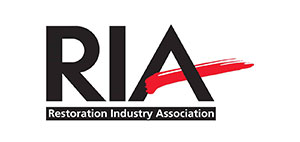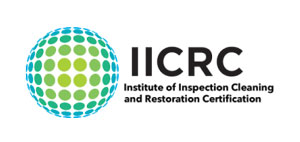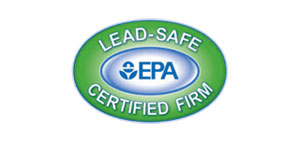Did you know mold can grow on attic insulation, even though fiberglass isn’t food for it? This fact helps us understand how mold interacts with insulation. It’s important for keeping our homes healthy and efficient.
Mold grows when humidity is high, especially between 65% and 99%. About 25% of roof insulation shows signs of mold, often due to being pulled before. This points to ongoing mold problems.
Roof mold and attic insulation mold are closely linked. Spores from the roof can fall onto insulation. Moisture in roof decking, often over 80%, leads to mold damage.
This moisture also causes mold to grow in other home areas like crawlspaces, attics, and basements.
Knowing what causes mold is key to stopping it and keeping our homes healthy. Mold can make insulation less effective, raise heating and cooling costs, and harm our health. It can cause sneezing, runny nose, and shortness of breath.
By learning about mold growth in insulation and using prevention strategies, we can protect our homes and health.
Key Takeaways
- Mold can be found on attic insulation surfaces due to falling spores from roof sheathing and high humidity levels (65%-99%).
- High moisture levels in roof decking (80% and above) contribute significantly to visible mold damage.
- Fiberglass isn’t a viable food source for mold, but mold can still grow on insulation when conditions are right.
- Health implications from mold exposure include sneezing, runny nose, and shortness of breath.
- Preventing mold growth involves addressing moisture issues and optimizing insulation effectiveness.
Understanding Mold Growth in Insulation
Mold in insulation grows mainly because of moisture. Knowing how mold spreads in insulation helps us spot it early. It also helps us prevent it from happening.
Attics are perfect for mold because they’re warm and humid. Wood sheathing in attics feeds mold. Moisture often comes from blocked vents or leaks.
Signs of mold in insulation include dark spots on wood and wet insulation. You might also smell mildew or see frost on roofs in winter. These signs warn us of mold.
Basements are also prone to mold because of leaks and condensation. Even mold-resistant insulation can get moldy if it’s damp. Look out for nasal problems, skin issues, and wheezing.
Crawl spaces can get moldy too, showing green or black spots and musty smells. This can make people’s eyes itch and cause coughing.
Mold can look like white, black, or green spots. These can harm air quality and health, especially for those with breathing problems or weak immune systems.
To avoid mold, use mold-resistant insulation and check for leaks. This is key to keeping insulation mold-free.
Does mold grow in insulation?
Mold can grow on insulation, especially in moist environments. When we talk about does mold grow in insulation, it’s key to know that insulation types vary. Fiberglass insulation is less likely to grow mold than cellulose, making it a good choice for those who want mold-resistant insulation.
Mold in insulation poses serious health risks. It can cause breathing problems like asthma and allergies. Symptoms include coughing, eye irritation, and sneezing. It’s vital to prevent mold in insulation to avoid these health issues.
- Visible signs of mold on insulation include discoloration, musty odors, and direct visual confirmation of mold presence.
- Professionals recommend keeping indoor humidity levels below 50% to prevent mold growth.
- Heavy mold contamination often necessitates the removal and replacement of affected insulation material.
In severe cases, you might need a professional to assess and fix the problem. Using a vacuum with a HEPA filter can help capture mold spores. Also, getting a specialist to check for mold in fiberglass insulation is wise, as handling it can release spores.
Attics and basements are hotspots for mold due to high humidity and temperature changes. Attic insulation can get mold from roof leaks and poor ventilation. Basement mold often comes from leaks, floods, or condensation, causing skin irritation and wheezing.
Crawl spaces are also prone to moisture and mold. You might see mold spots and decaying beams. Common mold types include white, black, and green molds. It’s crucial to tackle mold in these areas, especially for those with respiratory issues or weakened immune systems.
To prevent mold in insulation, keep humidity levels in check, ensure good ventilation, and fix any leaks or water issues quickly. By understanding the causes and taking preventive steps, homeowners can lower the risk of mold in their insulation.
Conclusion
Homeowners often wonder if mold can grow in insulation. This is important for keeping homes healthy and lasting longer. Mold loves humid places and harms many buildings in the U.S. Knowing how insulation materials can get moldy is key to stopping it.
Fiberglass insulation gets moldy if it gets wet and is not installed right. About 1 in 5 times, this happens. Cellulose insulation also gets moldy in about 30% of cases, mainly because it’s not sealed well. Rock wool and spray foam insulation are better but can still get moldy if they trap moisture or are installed wrong.
To stop mold in insulation, start with professional installation and regular checks. Mold in foam board insulation happens in about 12% of cases because of bad installation. So, checking insulation at least once a year is a must to catch problems early.
In short, mold in insulation can be greatly reduced with careful planning and upkeep. Homeowners need to know how their insulation might get moldy. They should also make sure their HVAC systems work well and are maintained. Fixing leaks and using good filters helps keep mold away. By doing these things, homeowners can keep their insulation from causing problems.





